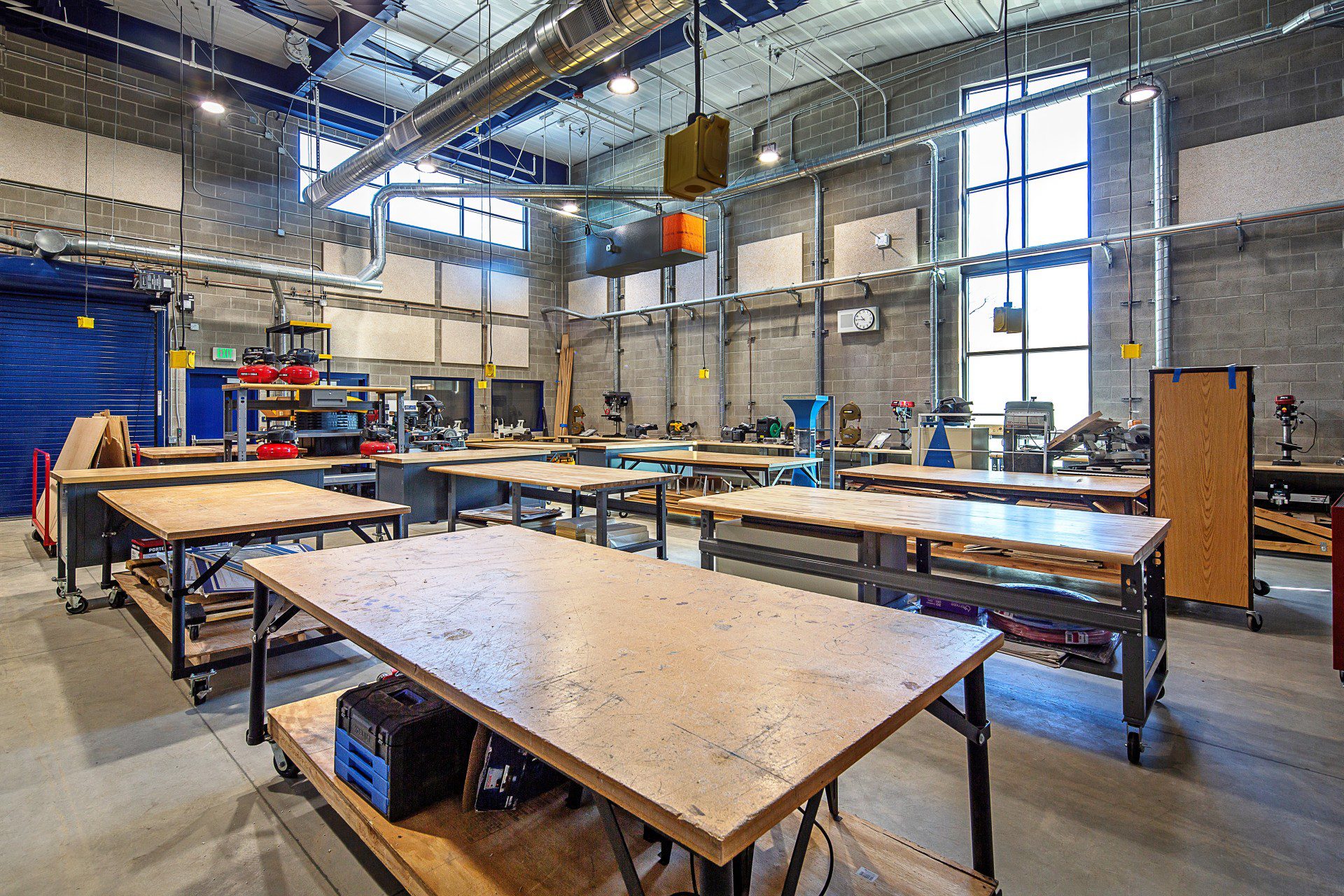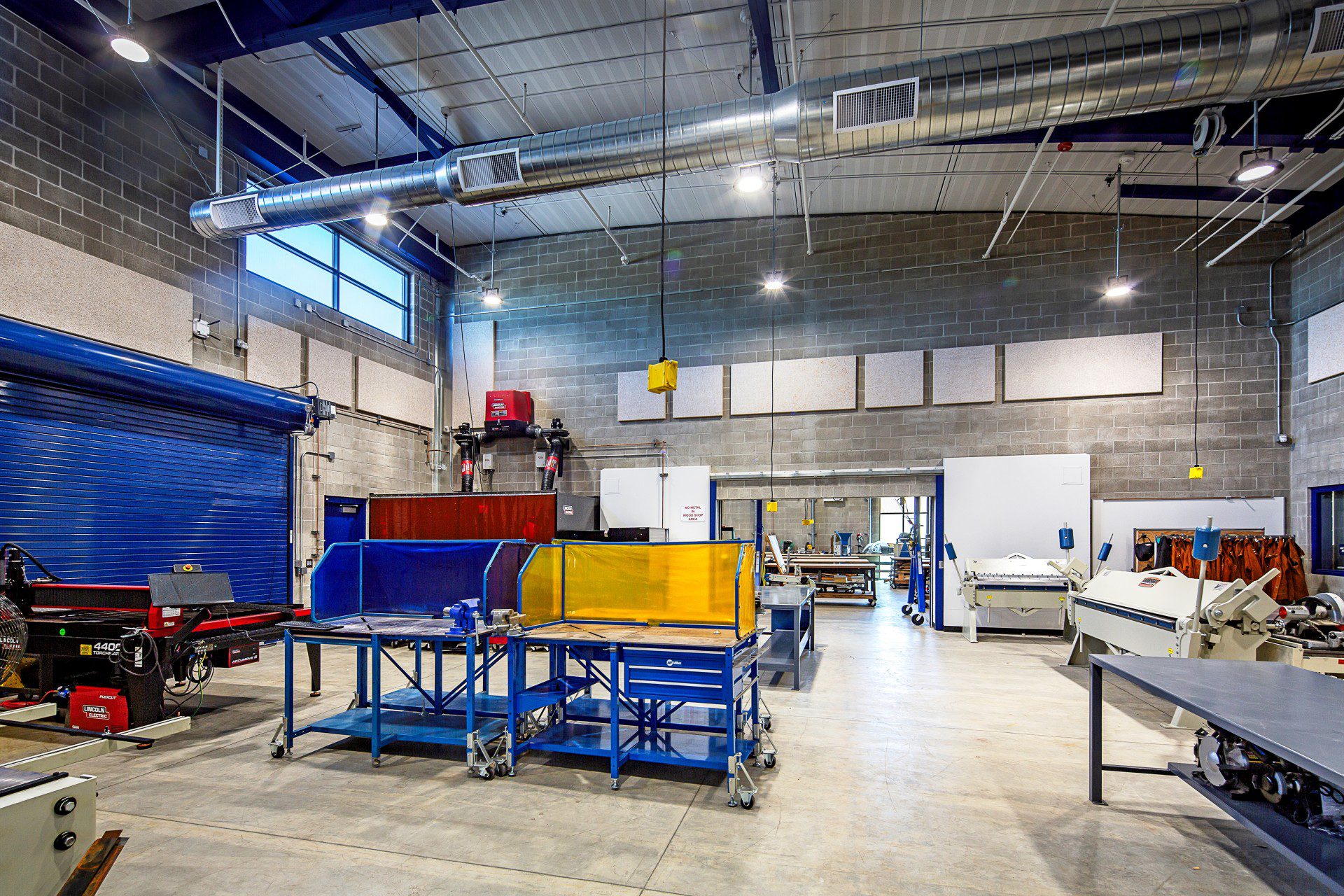FCUSD Effort Targets Manufacturing Skills Gap
“FCUSD Manufacturing Skills / CTE Courses” – April 2021
Sacramento-area hiring managers were wringing their hands, scrolling through under seasoned resumes in an anxious attempt to bridge a widening skills gap in manufacturing.
Somewhere nearby, eighth graders were “squirming in their seats,” just aching to be free from math class. It’s not that geometry was too hard. It was just so hands-off… and it didn’t seem to be building to anything.
“Kinesthetic learners want to work with their hands,” explains Alicia Caddell, CTE Coordinator in the Folsom-Cordova Unified School District. At the same time, she says, local manufacturing companies are going to guileful lengths to fill critical positions: “They end up stealing from each other.”
Where some might see irony, Caddell and her CTE-focused colleagues saw an opportunity. These were high-energy, high-security jobs paying $45,000-plus without a college degree. Surely, they thought, there was a way to bridge that gap with K-12 education.
“What can we do to create that skill set?” the coordinator wondered.
The answer was a cross-agency effort harnessing Strong Workforce Program K-12 funding to develop CTE curriculum and train teachers under the guidance of local industry. Through the support of partners like the Sacramento Valley Manufacturing Initiative (SVMI), “kinesthetic learners” in Folsom and Rancho Cordova no longer had to wait for college to build a workforce-relevant foundation in CTE.
Now, high school students could take classes in manufacturing, design, engineering, and more from ninth grade, picking up job-ready skills and even earning college credit along the way.
“We want to move students from “doing school” to a deeper engagement with learning,” says Folsom High School Principal Howard Cadenhead. “Instead of learning chemistry in a vacuum, they can apply their knowledge to the selection of project materials to accomplish a goal or project.
“This shift begins when we make learning relevant.”
That shift is challenging the idea that education and training are two separate things. Students who are exposed to early career ed opportunities, according to experts, are more likely to succeed in higher education, whether or not they pursue a “technical” career.
Even in high school, says one Folsom High School teacher, it’s easy to see how CTE experience translates to broader academic success.
“One of my CHEM teachers sent me a screenshot of a student response where he cited his experience in my class,” recalls Andrew Bias, instructor of Advanced Product Innovation, Design and Manufacturing. “He mentioned that welding is bonding material at the molecular level, which he understands now in Chem.”
True believers, like Bias and Kinney High School Welding Instructor Ian Duncan, committed to the project by taking on extra training. It began to pay dividends immediately, with students finding themselves engaged, whether picking up a new passion or simply taking a break from the books. Best of all, employers were beginning to see a long-term solution to skills deficits that had so long impeded regional industry.
But while Cadenhead gives his instructors credit for their “incredibly creative” wizardry in transforming high school classrooms into centers of CTE learning, there was one thing missing: a proper facility. That would all change in August 2020, when the district cut the ribbon on a $12.6 million, state-of-the-art CTE building on the Folsom High School campus.
“This gives our kids the chance to get experience before they enter the workforce,” Bias says about the game-changing facility. “The Haas mills in our manufacturing lab are the same ones our kids will see in industry. The welding power supplies, sheet metal equipment … are all the same in those industries.”
Though COVID-19 delayed the building’s debut, Caddell says the additional time to prepare for live classes represented a silver lining. By Spring 2021, when students finally began to file in, both faculty and facility were ready to prove the project’s merit.
“The idea is to have these common spaces to work on these skills together,” says Caddell, who credits K-12 Strong Workforce Program funding for “really getting it kicked off.”
“With these new facilities, it will be incredibly exciting to see what our teachers and students can learn and create,” adds Cadenhead.
The new building’s versatility creates an ecosystem for advanced skills at Folsom High School, with the various hosted disciplines supplementing and supporting each other. Not only do students from throughout the district gain cutting-edge skills, they get a glimpse of the big picture thanks to what Bias calls “cross-curricular collaboration.”
“We can have Engineering design and prototype an item before handing it off to Advanced Manufacturing to mass produce,” says the instructor. “We can have Architecture design miniature libraries and have the manufacturing program build them.
“This collaboration shows students how to work with other outsides of your job to complete a project.”
For an industry that’s facing 2.4 million* open jobs due to lack of a trained workforce by 2029, according to The Manufacturing Institute, the next generation is critical.
“The industry has been really struggling to fill those [CNC] positions for many, many years,” says Tim Schaefer, Advanced Manufacturing Training Administrator for the SVMI, a key partner in regional K-12 CTE efforts.
And with instructors, administrators, employers and the State of California rising to the skills gap challenge, it’s all-hands-on-deck for hands-on in K-12.
“I have a strong belief that project-based, hands-on learning engages a large segment of our students who struggle to find relevance in a purely academic program,” concludes Cadenhead. “Our CTE programs offer students a path to employment and independence and creates a stronger workforce for our communities.”
For Bias, it’s all about allowing students to build confidence in themselves and their futures, no matter which path they ultimately take.
“CTE to me, means opportunity,” says Bias. “We give our kids a chance to explore and prepare for life after high school. They either find something they like or discover what they don’t like, both of which are important.”
*https://operationalsolutions.nam.org/mi-skills-gap-study-18/









